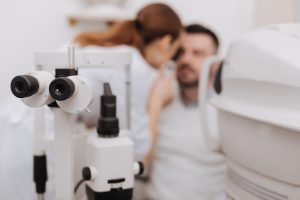Certified Ophthalmic Technician
To be a successful COT you should…
- enjoy working with people
- have excellent communication skills
- be able to work in low-light conditions
What will my job be like?
COTs work under the supervision and direction of an ophthalmologist. They are trained to measure visual acuity, instill ocular medications, obtain patient history, perform refractions, instruct paitents regarding medications, tests and procedures, measure intraocular pressure, neutralize spectacle lenses, measure corneal curvature, coordinate patient flow, measure and compare and test pupils.
Where could I work?
COTs work primarily in ophthalmologists’ offices or clinics.
What is the average annual salary?
$35,900
What is the future of this career?
The BLS reports employment of medical assistants is projected to grow 18 percent from 2020 to 2030, much faster than the average for all occupations.
About 104,400 openings for medical assistants are projected each year, on average, over the decade. Many of those openings are expected to result from the need to replace workers who transfer to different occupations or exit the labor force, such as to retire.
What type of education and/or training do I need?
An individual can become a COT via the following pathways:
- Graduate from an accredited formal training program
- Currently certified as a COA (Certified Ophthalmic Assistant) and work experience
- Currently certified as an orthoptist and work experience
Where can I get the education and/or training?
- Middlesex Community College, Middletown
Do I need a license or certification for this career?
Licensure is not required in Connecticut.
Where can I get more information?
Joint Commission on Allied Health Personnel in Ophthalmology
2025 Woodlane Drive
St. Paul, MN 55125-2998
(651) 731-2944
http://www.jcahpo.org/
